Green Energy, Green Living, Renewable Energy, Solar Energy

Suppose that climate change is not real and all we do is adopt green technologies, which our economy and our technology is perfectly capable of. Then all we’ve done is given our kids a cleaner world.
John McCain
Green technology is at the forefront of creating a sustainable tomorrow. This burgeoning field offers not only innovations but also solutions to some of our most pressing environmental challenges. Delve into the latest developments of 2023 and explore how you can play a part in shaping a greener planet.
Imagine a world where the air we breathe is clean, our water is pure, and our energy consumption leaves no trace. A dream? Far from it, thanks to Green Technology. But what exactly is this technology that promises a greener future? Simply put, green technology, also known as ‘greentech’ or ‘cleantech’, is a term used to describe technology that is environmentally friendly, non-polluting, and sustainable. It encompasses a wide array of practices, from renewable energy sources like wind and solar power to electric vehicles and energy-efficient appliances.
But why does green technology matter? The answer to this question lies in the alarming reality of our current environmental situation. We live in a world that is grappling with the devastating effects of climate change. Rising global temperatures, melting ice caps, and increasing sea levels are a grim reminder of the environmental impact of human activities.
👉 Green technology is not just about saving the planet. It’s about safeguarding our future on it.
Green technology presents an opportunity to reverse the damage, to mend things, to give our planet a fighting chance. It plays a pivotal role in reducing emissions, conserving natural resources, and promoting sustainability. But most importantly, it’s about creating a world where humans and nature can coexist harmoniously. And here’s the kicker – it’s not just good for the environment, it’s good for our economy too. The green tech industry is booming, creating jobs, and paving the way for a sustainable economic model.
Are you intrigued? Ready to dive deeper into the fascinating world of green technology? Well, you’re in for a treat, just buckle up and get ready to understand and appreciate the significance of green technology.
In the year 2023, we witnessed a significant surge in the adoption and development of green technology. Contrary to common misconception, green technology is not a futuristic, far-off concept. It’s here and now, revolutionizing various sectors, from energy to transportation, and even agriculture. Let’s delve into some of the top green technology trends that shaped 2023.
In 2023, the world is witnessing a remarkable shift towards renewable energy resources. Renewable energy technologies, particularly solar and wind power, have taken center stage. They are no longer an alternative but a mainstream source of power. These are environmentally friendly power sources that significantly reduce greenhouse gas emissions and dependence on fossil fuels. This shift is not just a vision anymore; it’s a reality! Take solar power, for instance. The International Energy Agency reports that solar energy is the cheapest electricity in history! In the U.S., 2023 saw a 23% increase in solar installations compared to the previous year.
Wind energy is another champion in the green technology field. It accounted for more than 16% of electricity generation in the U.S. in 2023, according to the U.S. Energy Information Administration.
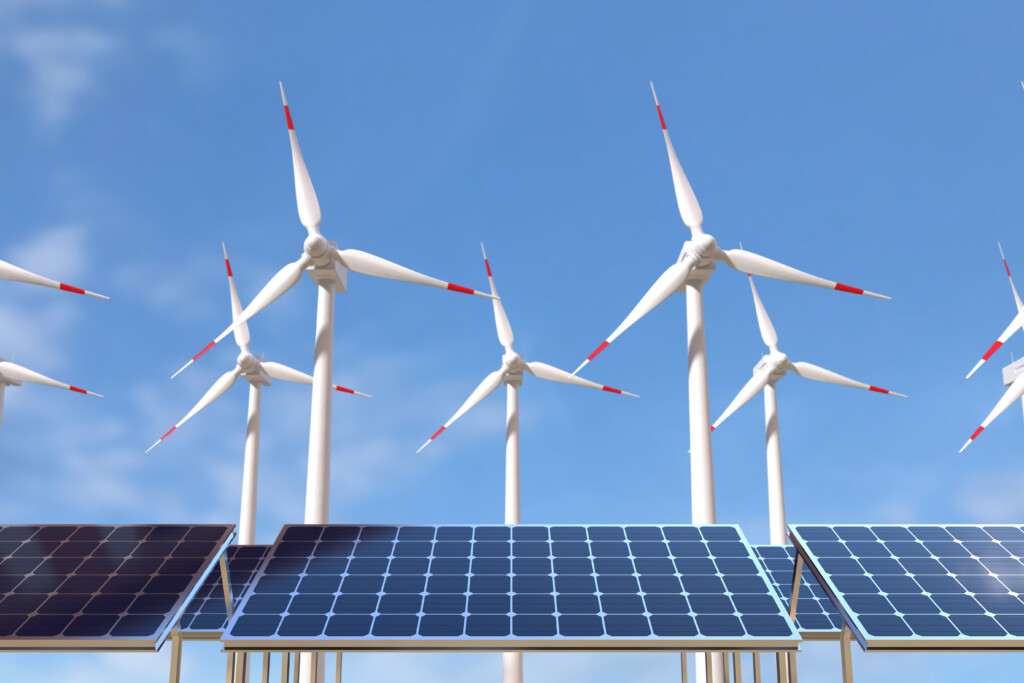
Furthermore, hydropower continues to be a significant contributor to the global energy mix. Did you know that by 2023, hydropower was generating about 10% of the USA’s electricity? And what about bioenergy? Bioenergy produced about 2% of the USA’s total energy in 2023, driven by its potential to harness energy from waste materials. It’s just amazing how we’ve moved towards a greener future, isn’t it?
❗According to a report by the International Renewable Energy Agency (IRENA), renewables accounted for over 80% of all new electricity capacity added in 2023. Now that’s a significant leap forward, isn’t it?
As we dive deeper into IRENA’s report, it’s clear that certain nations are leading the charge in this green revolution. But who exactly are these front-runners? Let’s take a closer look.

These five nations have shown extraordinary commitment to harnessing the power of nature. They’re not just talking the talk, they’re walking the walk, setting impressive examples for the rest of the world. It’s an inspiring sight to see, isn’t it?
Automobile manufacturers worldwide are shifting gears to produce more electric vehicles. They are driven by the twin forces of government regulations and increasing consumer demand for sustainable transportation.
🔋 Hybrid Vehicles: These offer a balance between traditional combustion engines and electric power. They are a stepping stone towards entirely electric transportation.
⚡ Fully Electric Vehicles: Battery technology advancements and increased charging station accessibility have made EVs more practical and affordable.
You see, the automobile industry is undergoing a paradigm shift from fossil-fuel-powered vehicles to vehicles powered by clean, renewable energy. This transformation isn’t just a whim or a fad, it’s an absolute necessity. But why, you may ask?
According to the Environmental Protection Agency, transportation contributes to nearly 29% of greenhouse gas emissions in the United States, the largest source of emissions. The adoption of EVs, therefore, can significantly slash these emissions, contributing to a healthier, greener planet.
What makes EVs a green technology? Well, they generate zero tailpipe emissions, which significantly reduces the pollutants released into the atmosphere. Not only that, but EVs are also typically more energy-efficient than conventional vehicles, meaning they use less energy to travel the same distance. More efficiency, less pollution – it’s a win-win.
The International Energy Agency reports that the global EV stock exceeded 2.1 million in 2022, a gigantic leap from just 17,000 in 2010. The momentum is undeniably growing, but we’ve got a long road ahead. With advancements in battery technology, infrastructure development, and supportive government policies, the shift to EVs is accelerating. But remember, the success of this green technology largely depends on everyone’s willingness to embrace it.

Green technology is revolutionizing the construction industry, facilitating the creation of sustainable, eco-friendly structures. This remarkable shift is not only reducing the industry’s carbon footprint but is also paving the way for a greener future.
Building with sustainable materials is at the heart of this transformation. But what does this entail?
♻️ Sustainable materials are resources that are not depleted when used, cause little damage to the environment, and can be recycled or reused.
As the demand for green buildings grows, so does the need for sustainable construction materials. Some of the commonly used green materials include:
Utilizing sustainable materials in construction offers a myriad of advantages. It not only diminishes the environmental footprint but also boosts energy efficiency, results in lower operational costs, and prolongs the lifespan of the building.

Green technology has a significant role to play in sustainable agriculture. Innovations like precision farming, vertical farming, and hydroponics are changing the way we grow food, making agriculture more resource-efficient, sustainable, and climate-friendly. These technologies, marked by innovation and sustainability, are not just a trend—they are the future. But what exactly does green technologies in agriculture entail, and how does they foretell the future of farming?
At the heart of green technology in agriculture is ‘smart farming’. This involves the use of advanced technologies like the Internet of Things (IoT), Artificial Intelligence (AI), and robotics to improve yield and efficiency, and reduce waste. It’s about making the most of resources, minimizing the environmental impact, and maximizing output.
🌾 Smart farming is about more than just automation—it’s about optimizing resources, reducing waste, and promoting sustainability.
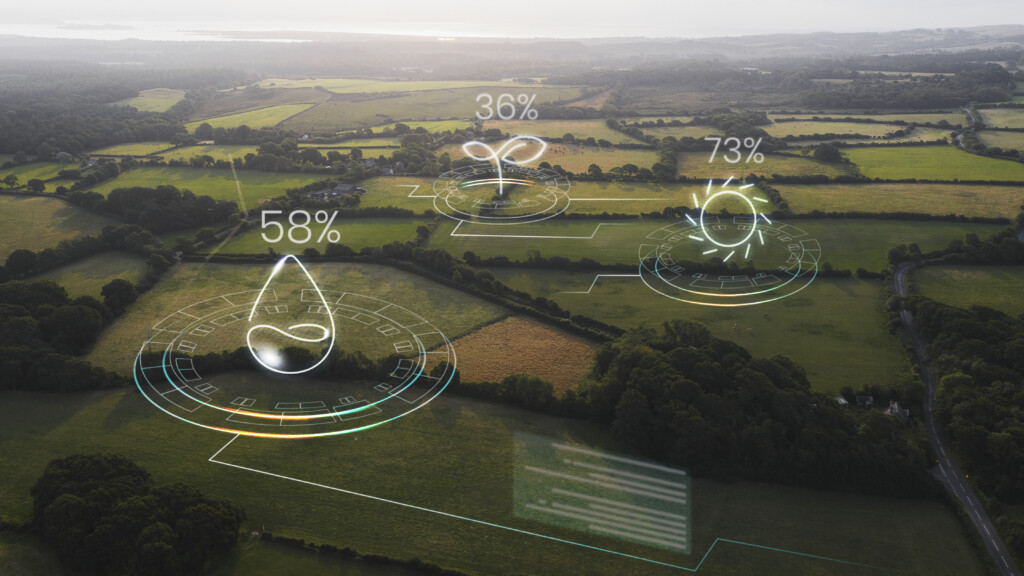
Another promising aspect is vertical farming. This technique involves growing crops in vertically stacked layers or inclined surfaces, usually in structures like skyscrapers, used warehouses, or shipping containers. It’s a revolutionary approach that makes urban farming possible, mitigating the space constraints of traditional farming.
ECO 1 Farm in United Arab Emirates. Passengers traveling on select flights through Dubai will enjoy greens harvested from ECO1, a massive warehouse-style vertical farm near the airport. This venture, a partnership between Crop One Holdings and Emirates Flight Catering, claims to be the world’s largest vertical farm. Spanning 30,000 square meters, the facility aims to annually produce over 900 tonnes of various leafy greens, from spinach to arugula, utilizing stacked shelves and consuming 95% less water than traditional field farming. Starting from July 2022, Emirates travelers will savor these greens, which will also be available for purchase by UAE residents in local stores. Remarkably, the produce needs no rinsing, as it’s cultivated without the application of pesticides or chemicals.
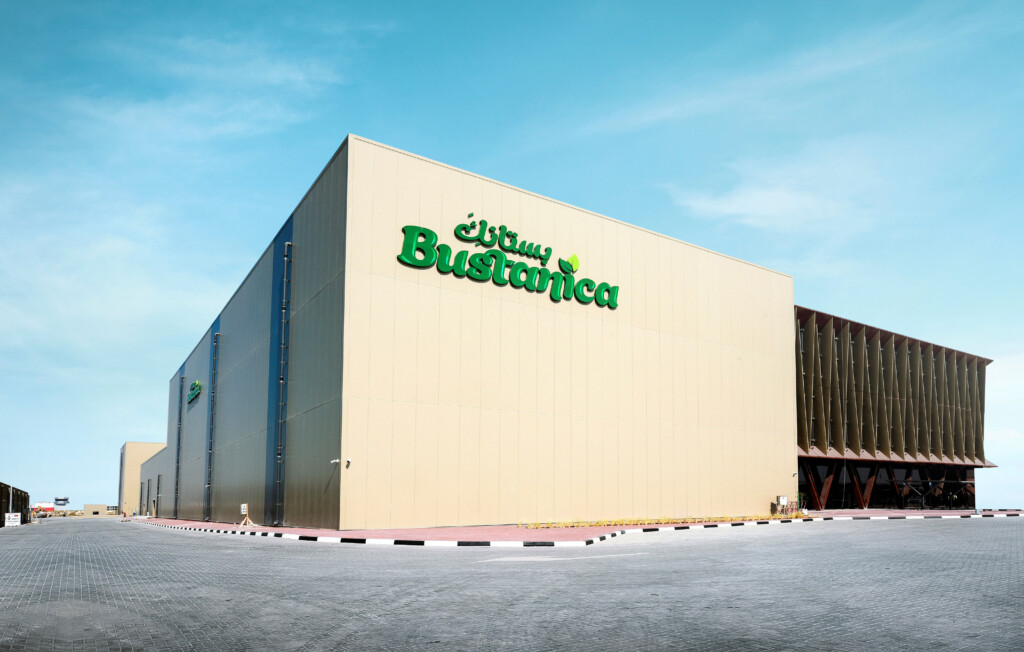
Another significant stride in green technology in agriculture is precision farming. Precision agriculture involves the use of GPS, remote sensing technology, and other technological tools to observe, measure, and respond to variability in crops. It’s all about analyzing the data and making more informed decisions to enhance productivity and sustainability.
Precision farming offers significant advantages to the agricultural sector. It leads to increased yield and profitability for farmers while minimizing the environmental footprint. Furthermore, this method optimizes the utilization of resources, ensuring that farming becomes more sustainable and efficient.
The world of green technology has seen a remarkable transformation with the advent of artificial intelligence. The harmonious synergy between these two fields has brought about unprecedented changes that are reshaping our perception of sustainable living. But what role does artificial intelligence play in this sphere?
The application of AI technology in energy management has proven to be a game-changer. AI-powered systems can analyze vast amounts of data to predict energy consumption patterns, which can then be used to optimize energy usage. These complex algorithms can even adjust to real-time changes in weather patterns, making them incredibly efficient and reducing overall carbon footprints.
AI is playing a pivotal role in the development of smart grids. These are electricity networks that use AI algorithms to predict and intelligently manage the supply and demand of electricity. With the increasing integration of renewable energy sources, like solar and wind power, smart grids are a key component in the transition to greener technologies.
The use of artificial intelligence in waste management is another area where AI is driving green technology. AI can assess the quantity, type, and location of waste, and optimize the recycling process. This not only conserves resources but also helps to reduce landfill waste.
🤖 Artificial intelligence is a crucial tool in our pursuit of a sustainable future. Its capacity to analyze, predict, and optimize makes it an invaluable asset in the realm of green technology.
Indeed, artificial intelligence is a significant driving force in the world of green technology. Its capacity to analyze and optimize processes in real-time is pushing the boundaries of what is possible in the quest for a sustainable future. Its impact is already visible in the spheres of energy management, smart grids, and waste management, and we can only expect its influence to grow in the years to come.
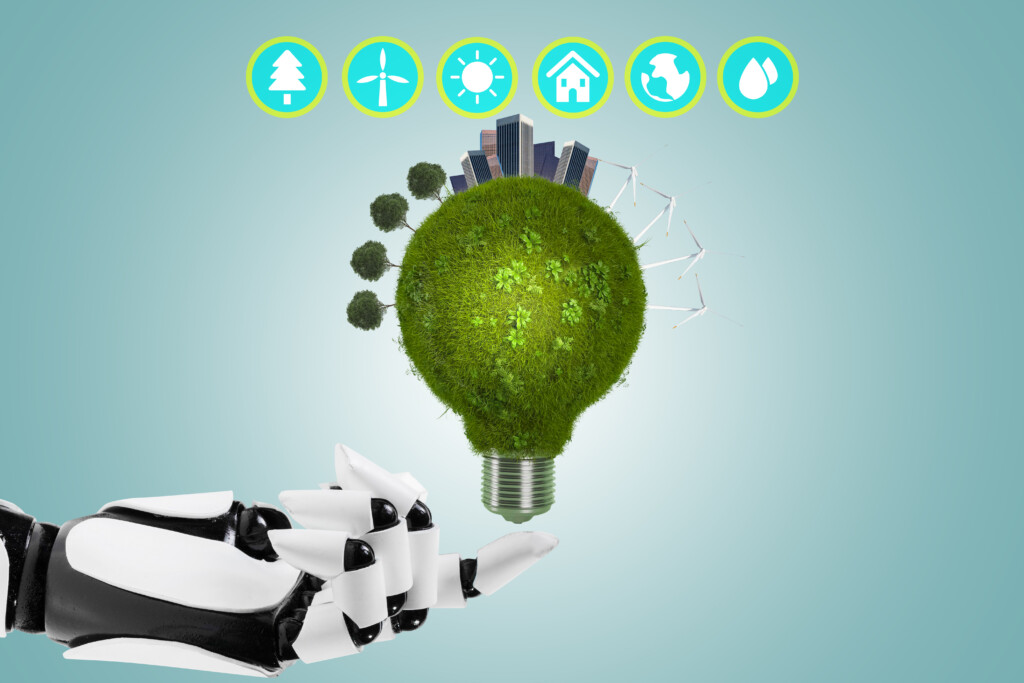
Imagine a world where your energy consumption doesn’t lead to environmental degradation but instead contributes to a greener planet. That’s the promise of green technology – and the economic benefits of adopting it are just as compelling as its ecological impact.
First and foremost, the adoption of green technology can offer a stabilizing effect on energy costs. Traditional energy sources like oil and gas are often subject to market fluctuations, leading to unpredictable energy costs. But green technologies, such as solar and wind power, are largely immune to these market dynamics.
In the next decade, the cost of electricity could decrease by 20% to 50% for renewable technologies. In the meantime, the cost of fossil fuel-fired power plants will increase or remain the same.
IRENA
Another substantial economic benefit of green technology is job creation. The renewable energy sector is more labor-intensive than the traditional energy sector, generating more jobs per unit of electricity generated.
According to a report by the International Labour Organization (ILO), 24 million jobs will be created globally by 2030 if the right policies to promote a greener economy are put in place. Also, the U.S. Bureau of Labor Statistics predicts that the two fastest-growing jobs through 2026 will be solar PV installers and wind turbine service technicians.
By investing in green technology, local economies can also benefit. Money invested in renewable energy projects tends to stay in the local community, paying for local labor, local materials, and local taxes. This helps to support the local economy and stimulate economic growth.
| Green Technology | Economic Benefits |
|---|---|
| Solar Power | Lower energy costs, job creation, boost to local economy |
| Wind Power | Stable energy costs, job creation, community investment |
| Energy Efficiency | Cost savings, reduced environmental impact, improved quality of life |
So, adopting green technology doesn’t just make environmental sense; it also makes economic sense. It’s a win-win for individuals, businesses, and entire nations. Green technology is indeed the way forward, and the sooner we embrace it, the better it is for our planet and our pockets.
Globally, numerous entities are making strides in the green technology arena, each playing a pivotal role in spearheading the charge towards a more sustainable future. These pioneers in green technology are not only addressing environmental challenges but also setting a standard for the rest of the world to follow.
Tesla, Inc. is an American electric vehicle (EV) and clean energy company founded by Elon Musk and several co-founders. The company has been at the forefront of EV technology, focusing on both performance and sustainability.
Achievements: Tesla’s Model 3 became the world’s best-selling electric car, and the introduction of their Gigafactories aims to produce EV batteries at a scale never seen before. Their commitment to sustainability extends beyond cars; their solar products and energy storage solutions seek to revolutionize green energy for homes and businesses.
Impact: With a global presence, Tesla has forced many traditional carmakers to accelerate their EV programs, pushing the entire automotive industry towards a greener future.

Formerly known as DONG Energy (Danish Oil and Natural Gas), Ørsted is a Danish company that underwent a significant transformation from being one of the most coal-intensive utilities in Europe to a global leader in offshore wind energy.
Achievements: Ørsted developed some of the world’s largest offshore wind farms, such as the Hornsea One in the UK. Their focus shifted entirely to green energy, with investments in wind, solar, and storage solutions.
Impact: Their transition serves as an inspiring case study for other energy companies globally, proving that with commitment, even traditional energy companies can pivot towards sustainability.

Beyond Meat is a Los Angeles-based producer of plant-based meat substitutes. Founded by Ethan Brown in 2009, the company aims to address the environmental challenges caused by livestock farming.
Achievements: Beyond Meat products, such as the Beyond Burger, use significantly less water, land, and energy compared to beef. Their products have been embraced by fast-food chains and supermarkets worldwide.
Impact: As a pioneer in the plant-based protein sector, Beyond Meat has raised awareness about the environmental costs of animal farming and offered a tasty alternative that’s gaining mainstream traction.

Vestas is a Danish manufacturer, seller, installer, and servicer of wind turbines. Since its foundation in 1945, it has grown to become a top global provider of wind turbine solutions.
Achievements: Vestas has installed wind turbines in over 80 countries. Their turbines collectively reduce carbon emissions by over 130 million tons annually.
Impact: As one of the primary players in the wind energy sector, Vestas’ advancements in turbine technology and global outreach have significantly propelled the adoption of wind as a clean energy source.
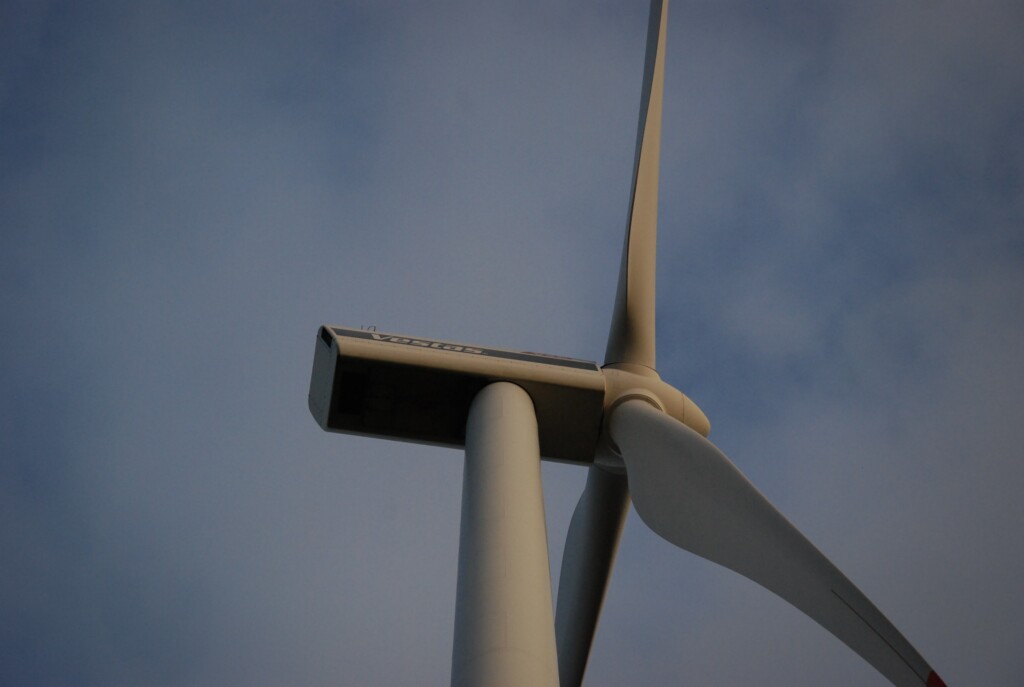
Founded in 1973, Patagonia is an American clothing company that has long placed sustainability at its core, both in its products and corporate practices.
Achievements: Patagonia uses recycled and organic materials, donates a portion of its profits to environmental causes, and encourages customers to repair and reuse their products. They’ve also launched initiatives like the “Worn Wear” program, promoting the idea of buying used.
Impact: As a leader in the fashion industry, Patagonia’s commitment to sustainability influences other brands to evaluate and adapt their environmental practices, pushing the entire sector towards a more conscious future.

As we catapult ourselves into the future, the urgency to intervene in the detrimental progression of climate change becomes alarmingly clear. Green technologies, the shining beacon of hope, spearhead our fight for a sustainable and healthier planet.
Acting as the antidote to our carbon-heavy practices, these technologies are not just alternatives but necessities. They present a compelling picture of a future where we coexist with nature, rather than exploit it.
🌍 Green technology is not merely an option anymore. It’s an urgent necessity.
Despite the challenges, the adoption and implementation of green technology have surged at an unprecedented rate. Renewable energy sources, like wind and solar, are flourishing, with global investments in renewable energy reaching 495 billion U.S. dollars worldwide.
We are just beginning to scratch the surface of the transformative power of green technology. The world as we know it can be reshaped, reformed, and revitalized by our collective commitment to a sustainable future. The question now is, will you be a part of this green revolution?
Stay a while and read more posts like this
Let’s devote a few minutes to envision our world in 2100. It’s quite a thought experiment, given the dramatic transformations our planet has experienced in...
With climate change looming large, the world is embarking on a quest for solutions to heal our ailing planet. Solar geoengineering emerges as a burgeoning field,...
Taking on parenthood comes with unique choices that factor in more than just our family’s immediate needs. For modern parents, who are not just guardians of...